 |
With visibility into the entirety of the customer journey, big data enthusiasts claim to be changing dramatically the lives of consumers. All that first part (or personal) data is going to lead us to a more customized, customer-centric world.
|
122 |
 |
When people are siloed, they can’t work together. When data is siloed, it can’t work for you at all.
|
123 |
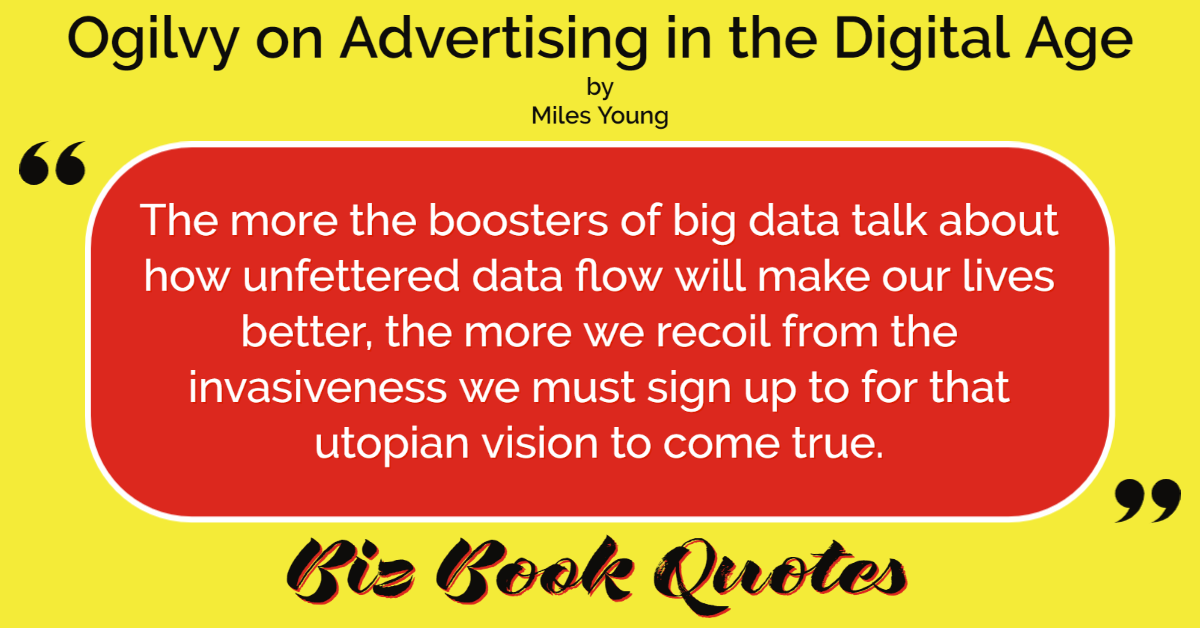 |
The more the boosters of big data talk about how unfettered data flow will make our lives better, the more we recoil from the invasiveness we must sign up to for that utopian vision to come true.
|
123 |
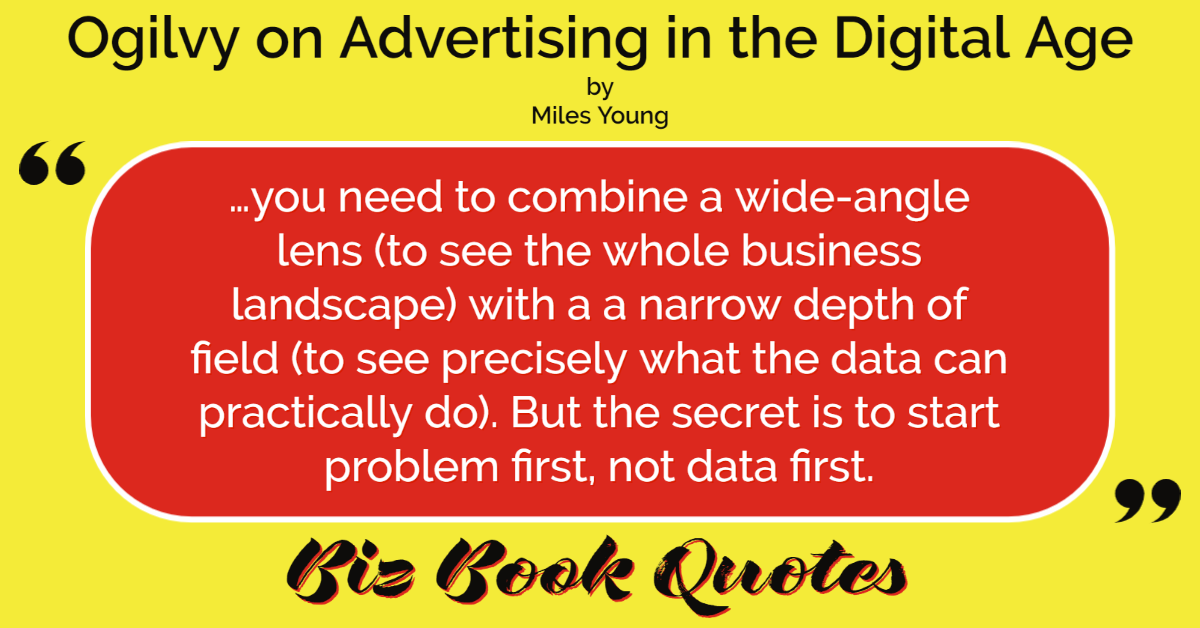 |
…you need to combine a wide-angle lens (to see the whole business landscape) with a a narrow depth of field (to see precisely what the data can practically do). But the secret is to start problem first, not data first.
|
124 |
 |
The most useful data has strong visual appeal, even to show simple stats…
|
124 |
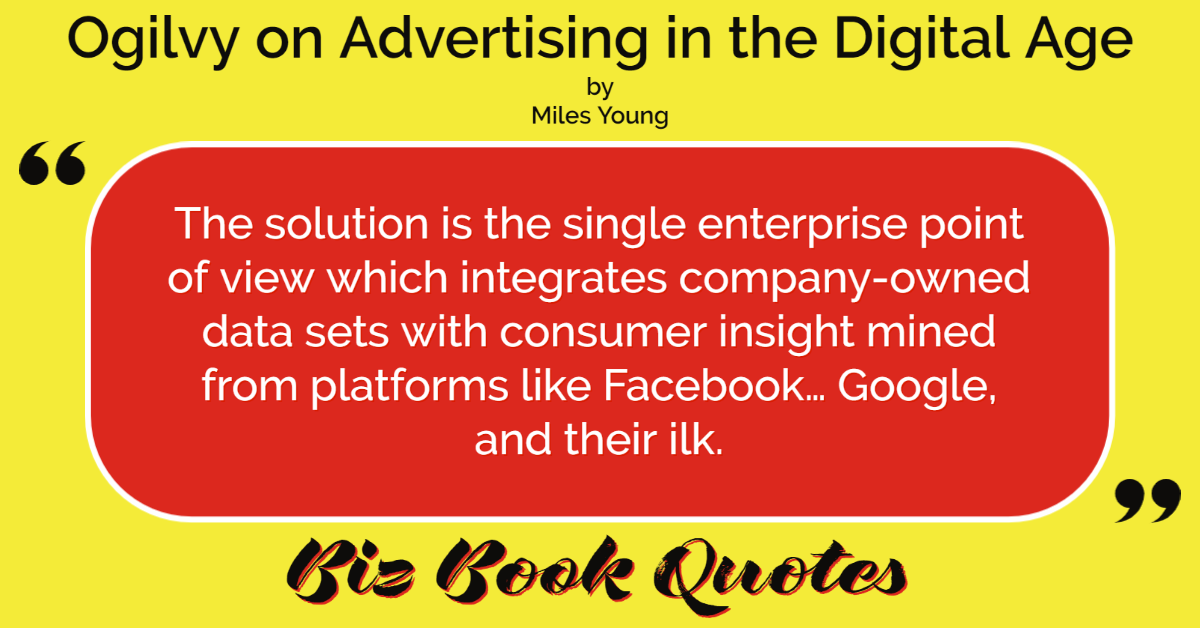 |
The solution is the single enterprise point of view which integrates company-owned data sets with consumer insight mined from platforms like Facebook… Google, and their ilk.
|
125 |
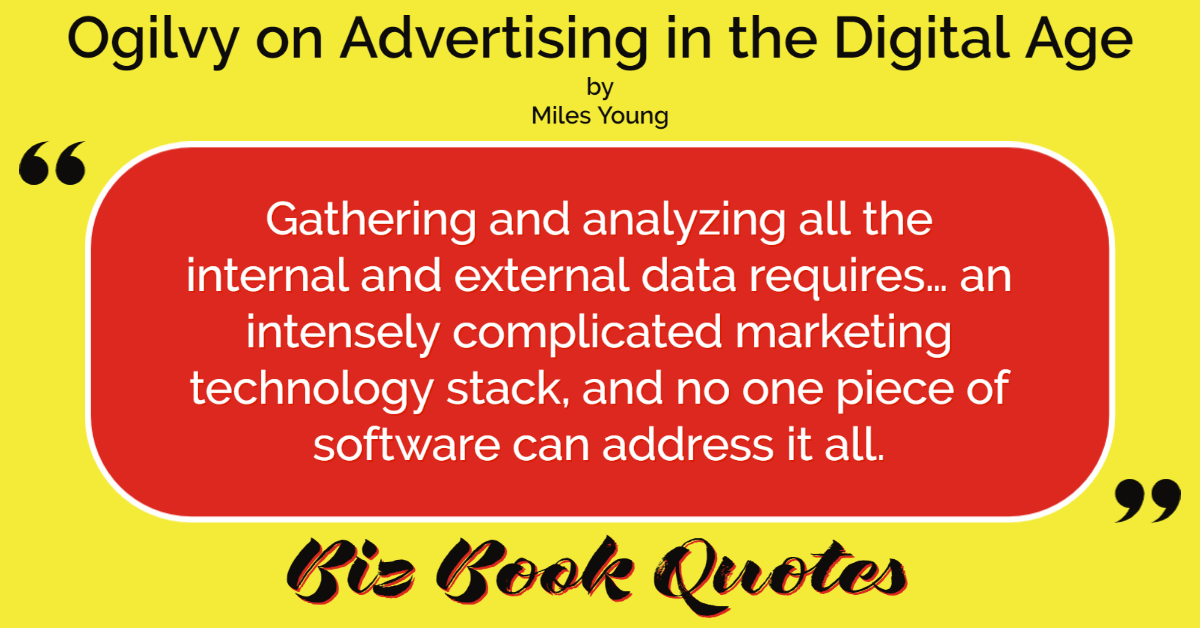 |
Gathering and analyzing all the internal and external data requires… an intensely complicated marketing technology stack, and no one piece of software can address it all.
|
126 |
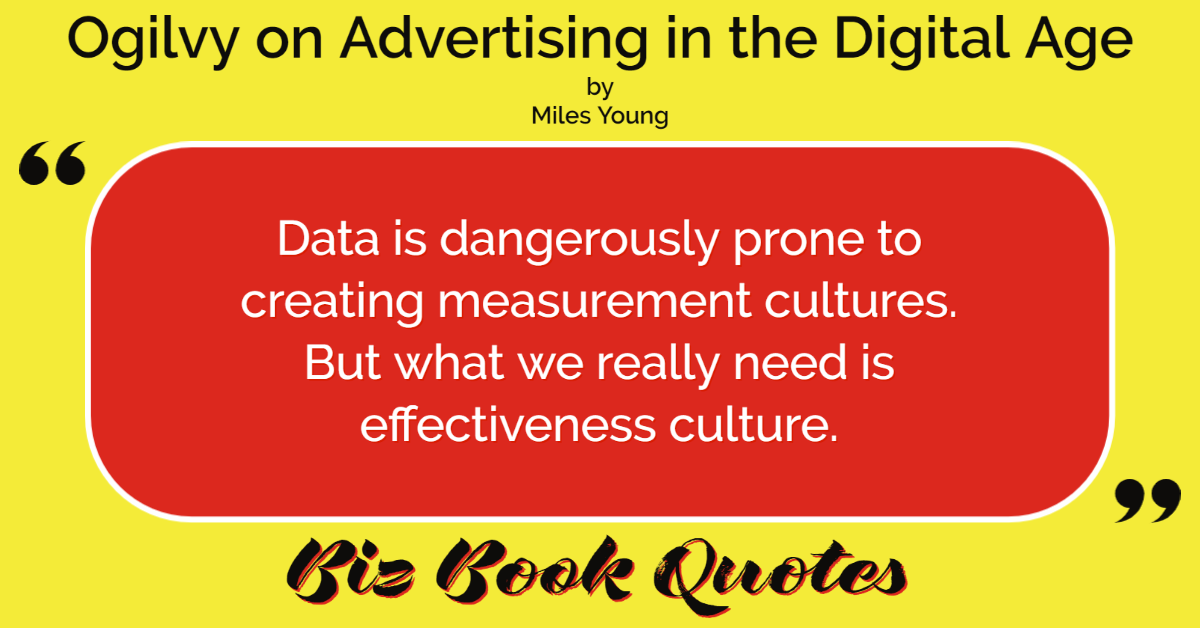 |
Data is dangerously prone to creating measurement cultures. But what we really need is effectiveness culture.
|
126 |
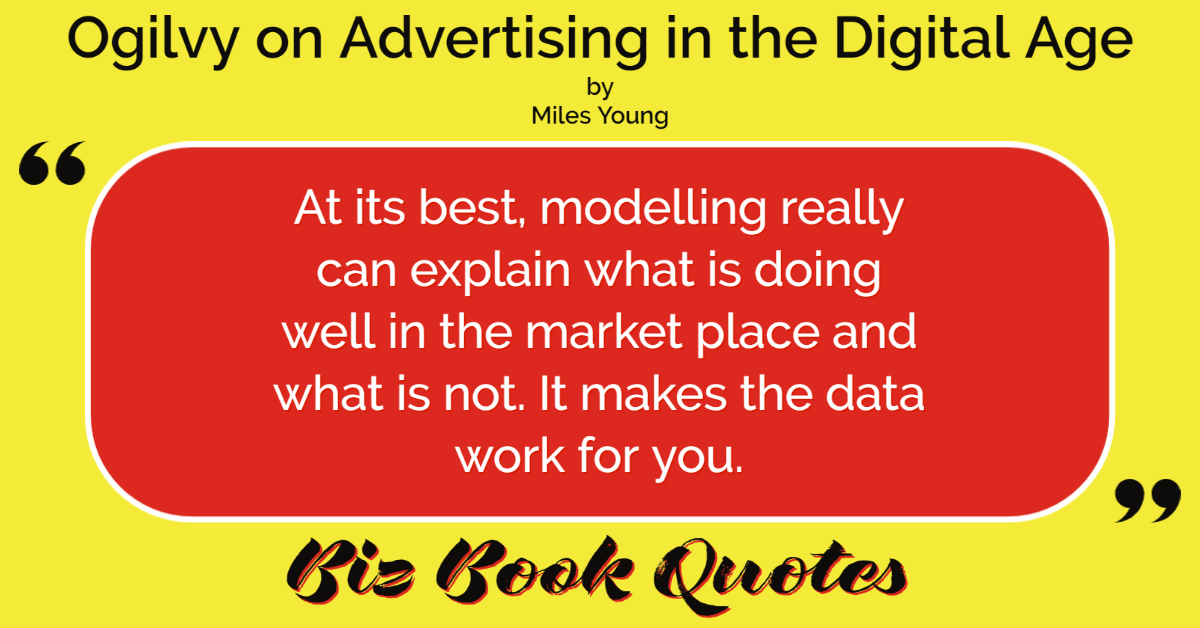 |
At its best, modelling really can explain what is doing well in the market place and what is not. It makes the data work for you.
|
127 |
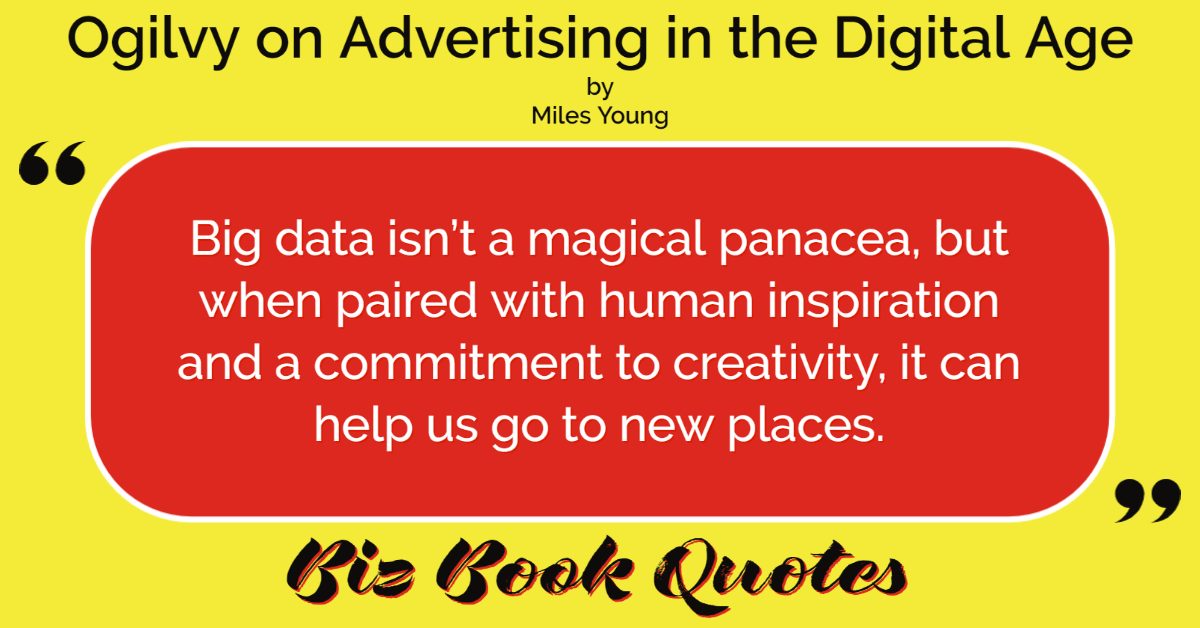 |
Big data isn’t a magical panacea, but when paired with human inspiration and a commitment to creativity, it can help us go to new places.
|
130 |